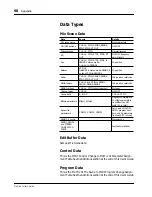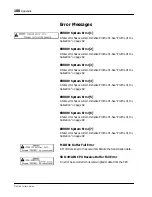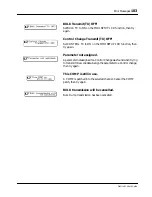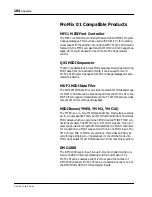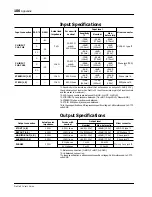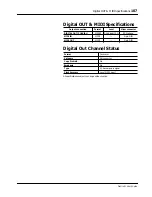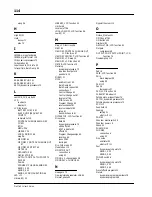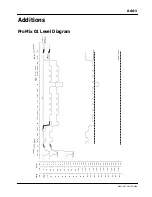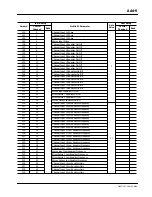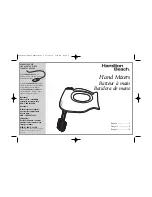
110
Glossary
ProMix 01 User’s Guide
Dynamic mix automation
— Mixdown automation where mix
settings are adjusted in real time.
Dynamic range
— The difference between the loudest and quietest
signal levels in a system. In an audio device, usually the difference
between the maximum output level and the residual noise floor. In a
digital system, the available dynamic range is determined by the data
resolution, about 6dB per digital bit. Hence, a 16-bit system theoret-
ically provides a 96dB dynamic range.
Edit Buffer
— The internal RAM area that stores the current
ProMix 01 mix settings (i.e. the current mix scene). When a mix scene
is stored, the Edit Buffer data is copied to the selected scene memory.
When a mix scene is recalled, the data of the selected scene memory
is copied back to the Edit Buffer.
LCD function
— A ProMix 01 function that does not have dedicated
hardware controls. LCD function parameters are selected on the LCD
display and set using the PARAMETER wheel.
LED (Light Emitting Diode)
— An electronic component that
lights up when an electric current is applied. ProMix 01 [SEL] and
[ON] buttons and stereo output meters use LEDs.
MIDI
— An acronym for Musical Instrument Digital Interface. An
internationally agreed standard that allows electronic musical instru-
ments to communicate with each other.
Mix scene
— A set of mixer settings at a particular point in a song.
Just like a play, a piece of music consists of various scenes, each requir-
ing different mixer settings. Mix scenes are stored in scene memories,
and can be recalled using front panel buttons or MIDI Program
Changes. These messages can be sent from a computer, MIDI foot-
switch, keyboard, or sequencer.
See
also
Scene Memory.
Modulation
— in general audio, using an LFO (low frequency oscil-
lator) to control a signal’s frequency (pitch) or amplitude (level). The
LFO frequency is set using modulation frequency parameters and the
amount of LFO control is set using modulation depth parameters.
Delay time and auto-pan speed parameters are also modulated.
Nyquist Sampling Theorem
— This theorem states that the sam-
pling frequency of a digital audio system must be at least twice that
of the highest audio frequency, otherwise waveform distortion called
aliasing will occur.
See also
Aliasing.
Oversampling
— Sampling an audio signal at a rate higher than the
normal sampling frequency. The net effect is that noise from quanti-
zation errors is reduced.
PAM
— An abbreviation for Pulse Amplitude Modulation. In the
first part of the A/D conversion, pulses occurring at the sampling fre-
quency are modulated by an analog audio signal.
See also
PCM.
Summary of Contents for Programmable Mixer 01
Page 4: ...ii ProMix 01 User s Guide...
Page 18: ...10 Chapter 1 Touring ProMix 01 ProMix 01 User s Guide...
Page 24: ...16 Chapter 2 User Interface ProMix 01 User s Guide...
Page 36: ...28 Chapter 3 Mixer Functions ProMix 01 User s Guide...
Page 68: ...60 Chapter 6 Groups and Pairs ProMix 01 User s Guide...
Page 74: ...66 Chapter 7 Scene Memories ProMix 01 User s Guide...
Page 96: ...88 Chapter 9 MIDI ProMix 01 User s Guide...
Page 102: ...94 Troubleshooting ProMix 01 User s Guide...
Page 116: ...108 Appendix ProMix 01 User s Guide...
Page 154: ...YAMAHA CORPORATION VS17170 IP 95 01 5000 AP Printed in Japan P O Box 1 Hamamatsu Japan...



